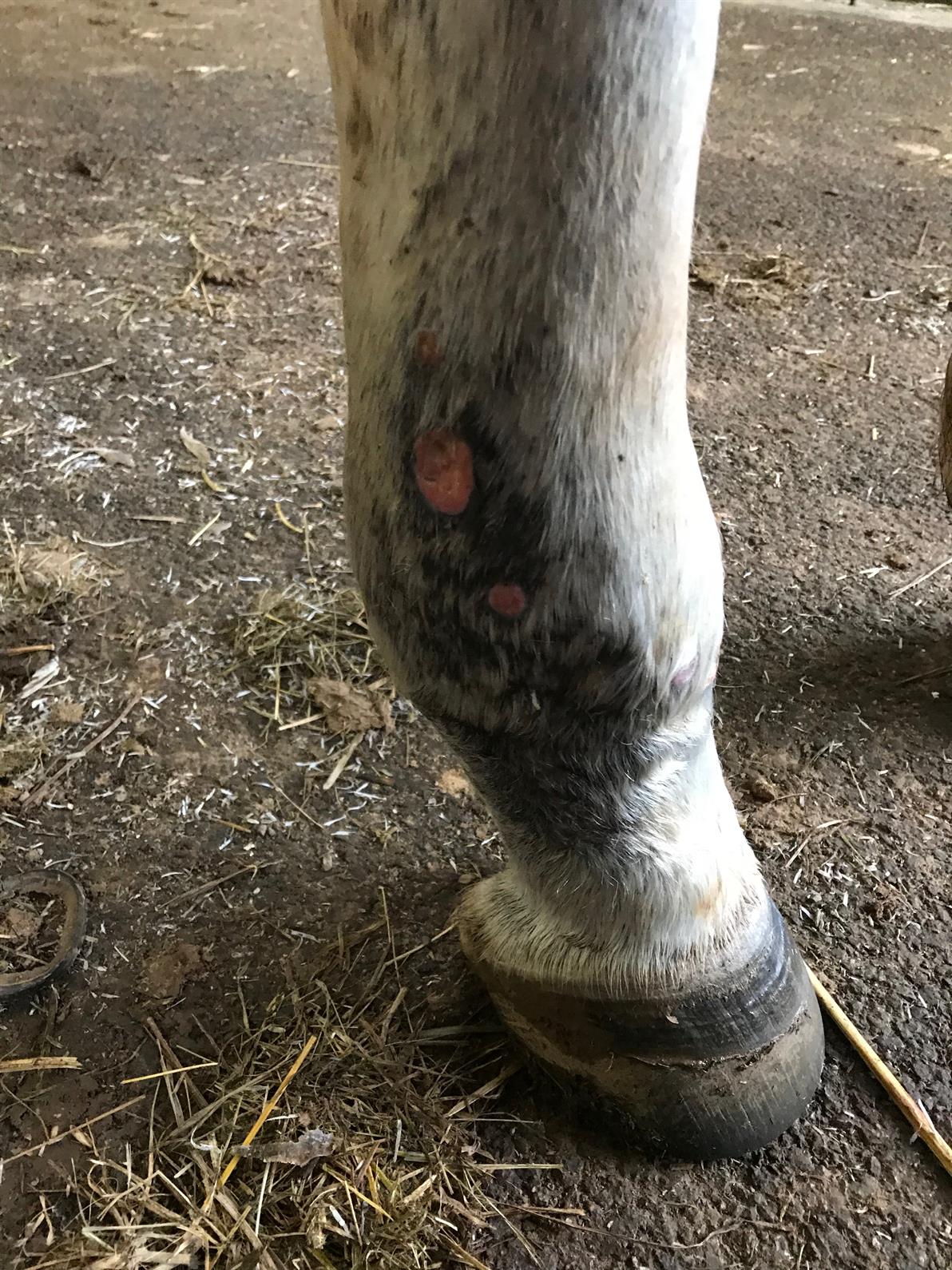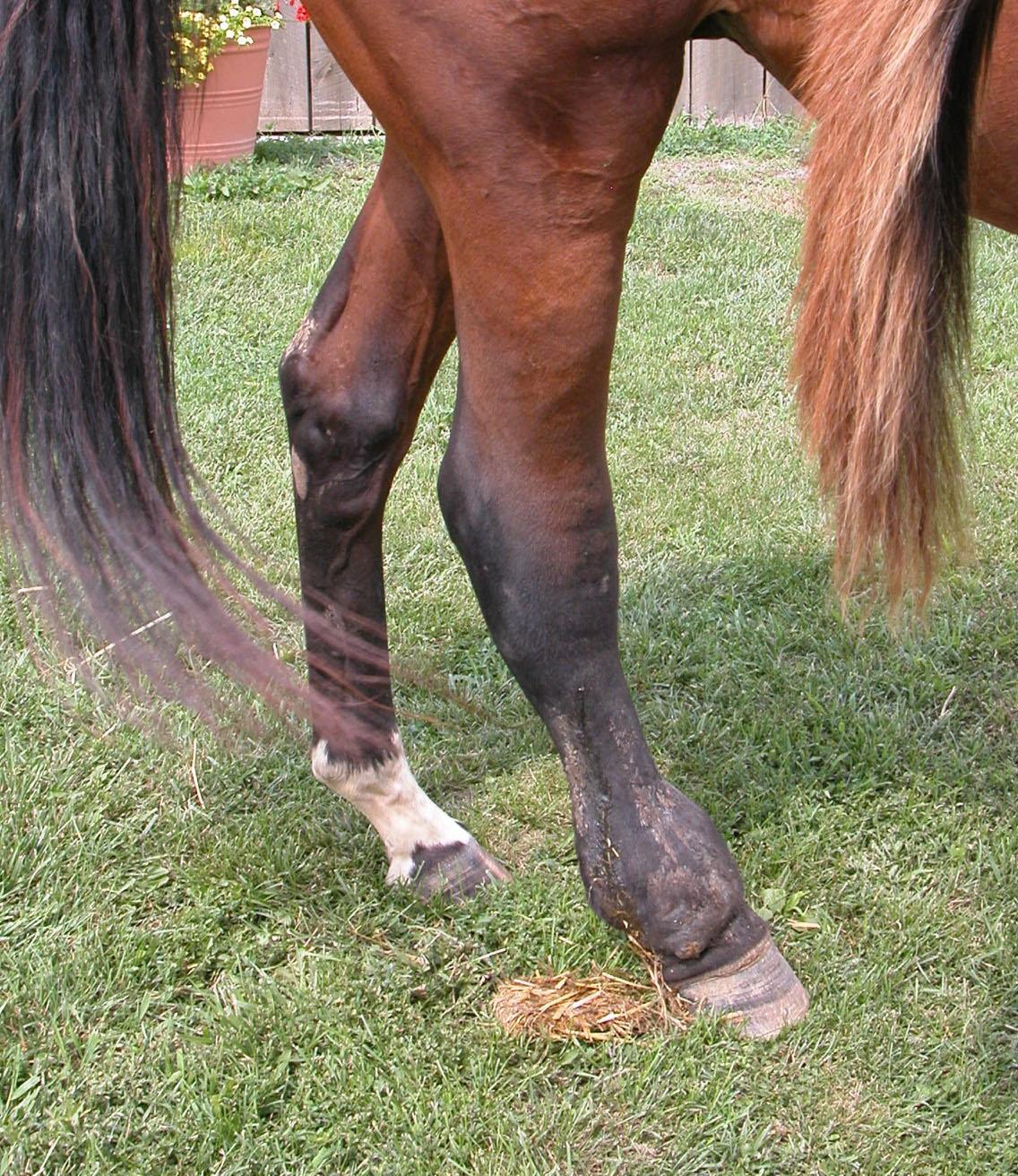Cellulitis, a bacterial infection of the soft connective tissues under the skin, causes sudden, extreme swelling in the affected area—often in a leg. Given the condition’s seemingly fast onset and dramatic appearance, horses and ponies with cellulitis—especially if they are lame or unwilling to move—can sometimes look like they have a severe injury, such as a bowed tendon or a fracture. So, before taking any action, call your veterinarian for a diagnosis, advises Dr. Luke Fallon of Hagyard Equine Medical Institute.

The causes of cellulitis can vary. A horse with cracked heels, dew poisoning, impaired lymphatic flow, or a cut might pick up bacteria that then proliferates, but a horse can also develop cellulitis in response to a viral infection that causes vasculitis (an inflammation of the blood vessels) or after an injury that causes a long-term swelling, which can allow bacteria or viruses to proliferate.
“I see it at all times of year,” Fallon said. “I see it more commonly during wet periods of the year, because wet conditions tend to cause conditions such as dew poisoning, mud rash, scratches, and cracked heels. Horses that are constantly standing in a moist environment can develop defects involving the soft tissues associated with the hoof, heel bulbs, and coronet band. Defects of this nature can become an entry point for bacteria.”
Symptoms
Whatever the cause, once a horse has cellulitis, it’s easy to spot. The swelling will be significant, hot, and often painful. A leg affected by cellulitis can have a “stovepipe” appearance, and the skin also might crack or develop an abscess. Quite often, the horse also will have a fever.
“Take the horse’s temperature,” Fallon advised. “If they’re running, say, a 102-degree temperature, yes, it could be stress-induced because they’ve got a fracture or have a horrible bowed tendon. However, if they’re running a fever, it could be because they have an active inflammatory process going on in their body related to an infection.”
In a leg, cellulitis often will start in the lower leg, around the heels, pastern, or fetlock.
“It can extend all the way up to the elbow in a front leg or above the gaskin in a hind leg,” said Fallon. “The edema [swelling] can be pitting or interstitial edema, where you can poke your finger into it and it leaves an impression. You’ll sometimes see horses that have so much edema that the serum starts to seep from the skin.”
Some horses also can develop chronic lymphangitis, a chronic form of cellulitis that occurs in horses who have impaired lymphatic drainage. Lymphangitis or impairment of lymphatic flow can set the affected limb up for infection by allowing fluid to pool rather than drawing it out again as normal. “When you’ve got a lot of sequestered or stagnant fluid, you have a perfect place for bacteria to proliferate and become a full-blown infection,” Fallon explained.
So what can you and your veterinarian do if your horse has cellulitis?

Reduce the Swelling
In cases of both cellulitis (and lymphangitis), getting rid of that excess fluid is a crucial part of treatment, Fallon says. Getting the horse moving, such as by hand-walking several times a day, is an excellent way to achieve this, but there are other options, too, that can help draw the accumulated fluid out of the limb. Those can include hydrotherapy (e.g., hosing with cold water, especially in acute and hot cellulitis cases, or alternating warm- and cold-water treatment, particularly in cases of chronic lymphangitis or cellulitis-related edema lasting longer than 48 hours); poultices or osmotic (fluid-drawing) agents under leg wraps; TheraPlate dynamic movement circulation therapy; and underwater treadmills.
“If there’s any way to exercise or move that limb, the muscle contractions will help move that lymphatic fluid up the leg,” said Fallon. “Exercise is key. If the animal is able to move around, that’s important.”
Non-steroidal anti-inflammatories like phenylbutazone (bute) or flunixin (Banamine) are also important in helping to reduce swelling, Fallon said. Corticosteroids and diuretics like furosemide (Salix) can be beneficial, too; antibiotics, corticosteroids, and/or diuretics should be given only under your veterinarian’s instruction.
Bandaging can be helpful, but it’s important to bandage properly for cellulitis, Fallon cautions, because an improper bandage can cause fluid to collect and stagnate above the bandage. Consult your veterinarian for advice on whether and how to bandage in your horse’s case.
In chronic cases, such as those associated with lymphangitis, low-dose aspirin therapy also might be helpful, but—again—consult your veterinarian before trying this. “You’re looking for things that can improve the vascular flow and lymphatic drainage,” Fallon said. “But the critical component is exercise: you’ve got to have locomotion to get that passive lymphatic drainage activated.”
Attack the Infection
“If you’ve got a case of cellulitis, typically your vet is also going to treat the horse with some sort of broad-spectrum antibiotic to address any sort of bacterial infection that might be active in causing the cellulitis or any potential secondary bacterial infection that could occur due to the edema in the soft tissue,” Fallon said.
Watch Out for Recurrence
Horses who have had cellulitis are somewhat prone to developing it again.
“They certainly can, and the more they have recurrent cases of cellulitis or lymphangitis, it has a propensity to affect that same limb or limbs again,” Fallon said. “And anything that causes inflammation in the body might cause it to flare up again. For example, if your horse gets a gravel in that foot or has some sort of infection elsewhere in his body, that might cause a recurring case of cellulitis.”
Want articles like this delivered to your inbox every week? Sign up to receive the Equestrian Weekly newsletter here.
This article is original content produced by US Equestrian and may only be shared via social media. It is not to be repurposed or used on any other website than USequestrian.org.


